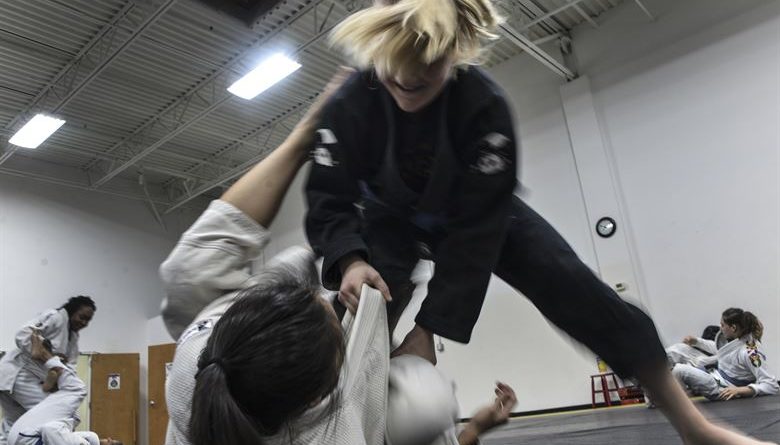How To Get The Most Out Of Your BJJ Drills
The most common thing a new white belt will hear when they are just getting started is to “relax.” It can be hard to not tense up when rolling for the first few months, as you don’t really know what to do or what to expect. However, many people will be tense or awkward when doing BJJ drills as well, employing too much strength and not understanding the details of the technique.
The person being drilled on will often resist the move with close to full intensity as well, which completely prevents his partner from doing the move and learning it correctly. Alternatively, they will completely relax, creating an unrealistic scenario that doesn’t help improve technique in the slightest. There are plenty of new techniques to learn, but if you don’t know how to drill, you’ll never really learn them at all.
The problem stems from not understanding that there are different types of BJJ drills. Most people think of drilling as just about repetition. You do the move as many times as you can in order to build “muscle memory.” But that is an over-simplification. Of course there are many ways to divide it up, but I would say there are three basic types of drilling.
- Learning
- Repetition
- Resistance

Learning
Learning is when you first see the technique and attempt to recreate it. This is extremely experimental, as you don’t really know how to pull it off yet. You should not rush through it and you definitely shouldn’t apply strength. Focus on getting your body to move the right way. It can be helpful to communicate with your partner. Ask them if something feels the way it should and be ready to hear suggestions about how to improve based on that.
Once you understand the basic form of the move, you can start drilling with some resistance. You are still just trying to figure out how the move works, but now under slightly more realistic conditions. Your partner will begin increasing their resistance so you can see if you are still able to pull off the move when they are uncooperative. It’s vital that you both understand that this is not a competition.
Instead, use this to get a sense of some of the possible reactions you will face. If a certain reaction is giving you trouble, make sure you are doing the move correctly to shut it down. Some of these reactions may force you to abandon the current move for something else. It’s important to acknowledge these options, but not get sidetracked.
Repetition
When most people talk about BJJ drills, this is what they have in mind: burning the move into your muscle memory. The point is to get as many repetitions in as fast as possible, so it is usually more effective to pick quicker techniques. You can ask for varying levels of resistance but better to keep it pretty loose. If you’re being practiced on be careful not to go limp, even though it might get boring! You need to maintain a basic level of posture to be useful to your partner.
The best way to use this style of drilling is to drill sequences instead of individual moves. Often times, this will mean active participation from your partner. They will have to defend your initial technique, which you will react to by transitioning into something else. These don’t have to be long sequences, but it can really help improve your reaction time to common defenses.
Resistance
Here is your opportunity to actually apply what you have learned. Perhaps the most overlooked of all BJJ drills, some people wouldn’t even call it drilling. Sometimes called “short time drills” in wrestling, you start from a specific position and roll at full intensity for a short period of time, say forty seconds. You get a relatively long break of twenty seconds and then you switch positions and let your partner have a turn.
This may just seem like rolling with long pauses in the middle. However, the big issue with rolling is that you don’t have a lot of opportunities to try new things. Certain moves can only be pulled off from specific positions or after a specific set up, and if you miss your opportunity you might not be able to try again the entire roll. This is obviously not a good way to work out the kinks of a new technique.
With resistance drilling, you get to start not only from a certain position, but often with a specific set up or grip. You should have a certain sequence or move that you have already drilled in mind and a clear goal going into the session. You only have forty seconds and you will get a rest, so you can and must work at a high pace. At the same time, pay attention to how your partner is defending your attacks. When you go again, learn from your mistakes in the first attempt.
To see some of these ideas expanded, check out these videos:
This month is packed with grappling action. For tickets to the upcoming Polaris 12 on 30th November in Newport, South Wales, click here.

